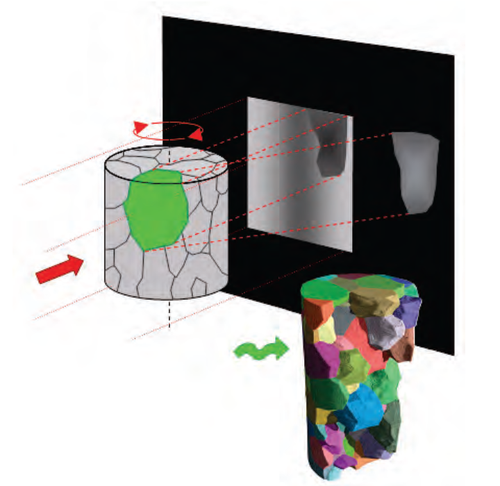Grain mapping
Grain tracking or grain mapping is an emerging technique that produces maps of grain shapes and crystallographic orientations in polycrystalline materials, nondestructively and in three dimensions. A typical dataset consists of a series of images containing diffraction spots, recorded while the sample is rotated. As many as 7200 projections per sample may be acquired, and new detector developments allow multiple images to be recorded simultaneously. A grain mapper will be built at the GKSS High Energy Materials Science Beamline at PETRA III in cooperation with RISO National Lab. (Denmark). The grain mapper will be able to acquire three images at once, giving a total of 38 MB of data per projection, and !270 GB for a scan of 7200 images. An experiment might involve a series of such scans, further increasing the volume of data. With about 8 datasets per day the effective data rate amounts to more than 2 TB/d.Data processing then involves correction of image distortions and backgrounds, and the separation of diffraction spots from the images. The shape, size, position and other parameters of these diffraction spots are used to determine the crystallographic orientations of the grains and to reconstruct their shapes. The final dataset is a 3D map of both the grain orientations and the X-ray absorption coefficient, giving at least 7 dimensions to consider in the analysis.
